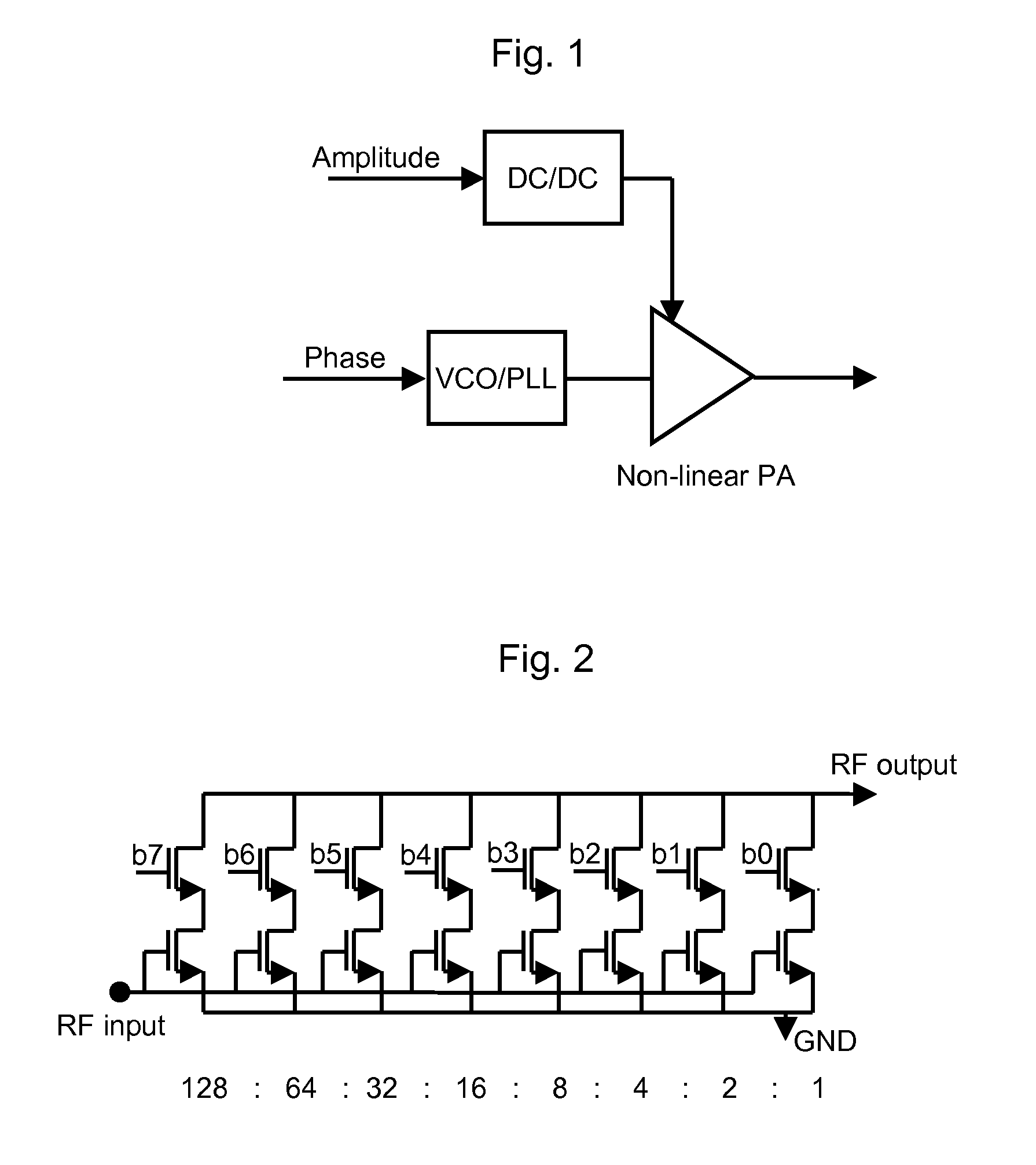Output stage for a digital RF transmitter, method for providing an RF output signal in a digital RF transmitter, and digital RF transmitter
a digital rf transmitter and output stage technology, applied in the direction of amplifiers, electrical apparatus, semiconductor devices/discharge tubes, etc., can solve the problems of shortening the battery life, low power efficiency of linear power amplifiers compared to non-linear power amplifiers, and reducing the size of sections, so as to improve overall power efficiency and reduce the size of sections
- Summary
- Abstract
- Description
- Claims
- Application Information
AI Technical Summary
Benefits of technology
Problems solved by technology
Method used
Image
Examples
Embodiment Construction
[0028]An embodiment of the invention will now be described with respect to FIGS. 3 to 5. According to the embodiment, the output stage 1 comprises four power amplification sections S1, S2, S3, and S4 (i.e. N=4 in the present embodiment). It should be noted that the invention is not limited to N=4 and other numbers are possible as well. However, N>2 is preferred and N>3 is more preferred. Each of the power amplification sections S1, S2, S3, and S4 is formed by a thermometer-coded envelope-modulated polar amplifier. In the following, the functioning of this thermometer-coded envelope-modulated polar amplifier will be described with reference to FIGS. 4 and 5 for the power amplification section S1.
[0029]As shown in FIGS. 4 and 5, the thermometer-coded envelope-modulated polar amplifier 2 comprises a unit array 3 which in the present embodiment has 256 (16×16) unit cells 4 arranged in 16 rows and 16 columns. Thus, the polar amplifier 2 is adapted for 8-bit data. A skilled person will un...
PUM
 Login to View More
Login to View More Abstract
Description
Claims
Application Information
 Login to View More
Login to View More - R&D
- Intellectual Property
- Life Sciences
- Materials
- Tech Scout
- Unparalleled Data Quality
- Higher Quality Content
- 60% Fewer Hallucinations
Browse by: Latest US Patents, China's latest patents, Technical Efficacy Thesaurus, Application Domain, Technology Topic, Popular Technical Reports.
© 2025 PatSnap. All rights reserved.Legal|Privacy policy|Modern Slavery Act Transparency Statement|Sitemap|About US| Contact US: help@patsnap.com



